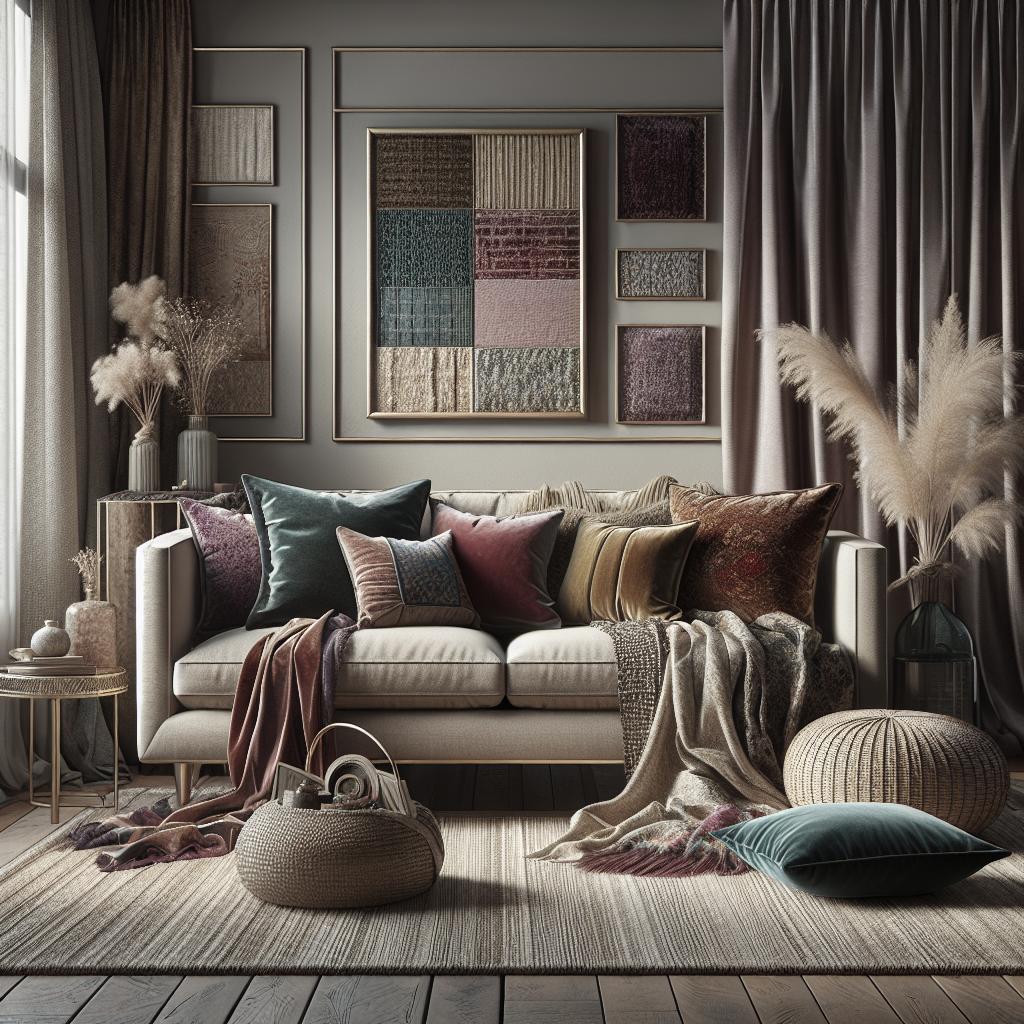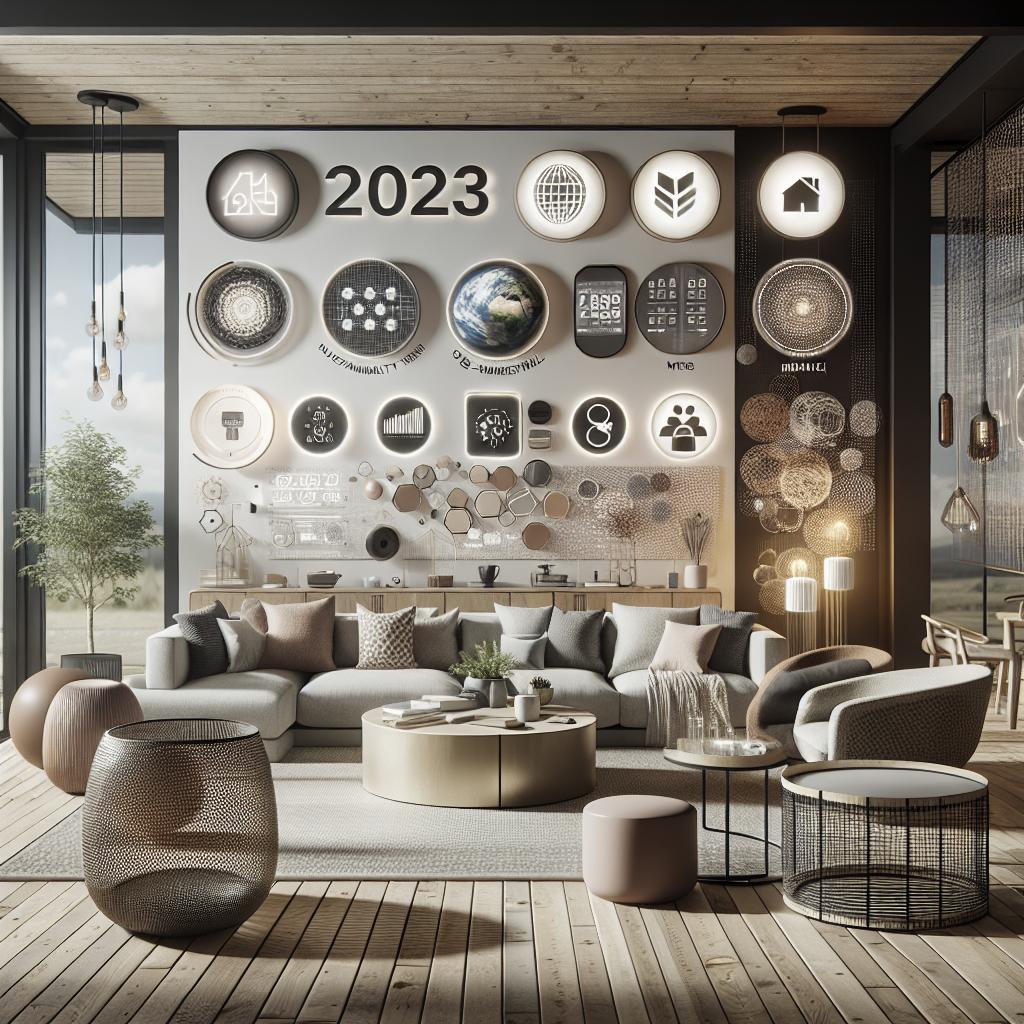Decorating with Textured Fabrics
In the realm of interior design, ‘Hygge’ has become a buzzword synonymous with comfort and coziness.
At the heart of this Danish concept is the use of textured fabrics, which play a critical role in
transforming any living space into a warm and inviting sanctuary. This blog post delves into the
essentials of creating a hygge home with specific types of textured fabrics. From boucle and corduroy
to knit and linen, discover the top 10 fabrics to enrich your home environment. We will also explore
innovative ways to mix materials for added depth and dimension. With a purposeful design plan, your home
will become a haven of serenity and softness that embodies the true spirit of Hygge.
What is Hygge?
Hygge, pronounced “hoo-gah,” is a Danish term that describes a mood of coziness and comfortable
conviviality with feelings of wellness and contentment. Originating from the tumultuous climates of
Denmark, this concept emphasizes the importance of creating a comforting environment, especially
during the harsh winter months.
Central to Hygge is the practice of surrounding oneself with simple pleasures, including the use of
textured fabrics to bring warmth and relaxation into every corner of the home. It’s not just a
design philosophy, but a way of life that embraces the idea of living in the moment and finding joy
in the simplest of things.
Why Create a Hygge Home?
With our fast-paced lifestyles, a hygge home offers a retreat from the daily grind, promoting tranquility
and restfulness. Incorporating Hygge into your home design encourages mindfulness, mental well-being,
and connection with loved ones—key elements for a balanced life.
By utilizing textured fabrics, you manage to evoke emotions of warmth and comfort, effectively
influencing your mood and adaptive lifestyle. A hygge home serves as a nurturing space where every
element is thoughtfully selected for its tactile experience, adding layers of comfort to your life.
Top 10 Fabrics & Textures for a Cosy Hygge Home
1: Boucle
Boucle is a textured fabric with loops that create a signature bumpy appearance. It’s commonly found
in furniture pieces such as sofas and armchairs, providing soft surfaces that invite relaxation
and comfort.
Because of its unique texture, boucle fabric can add personality and style to any room. Paired with
neutral tones, it keeps the atmosphere calm while ensuring the touch of sophistication inherent in
Scandinavian design.
2: Corduroy
Corduroy brings a plush, ribbed texture to the table, making it an excellent choice for upholstery
and drapery. Its thickness acts as a natural insulator, perfect for creating a cozy nook in your
hygge home.
Available in a range of colors, corduroy can be used to make vibrant pillows or throws, injecting
warmth and colorful charm into your living space while maintaining the hygge philosophy of comfort
and ease.
3: Brushed Cotton
Brushed cotton provides a soft, velvet-like finish that catches the eye and invites you to touch.
It’s an ideal choice for bed linens and cushions, offering a snug and inviting atmosphere.
The beauty of brushed cotton lies in its versatility and ease of maintenance, making it a preferred
material for homes that prioritize both style and practicality.
4: Chenille
With its plushness and slightly lustrous finish, chenille is a fabric that evokes luxury and coziness in
equal measure. Often featured in throws and plush pillows, it enhances the tactile experience in any space.
Chenille’s ability to retain warmth makes it particularly suitable for colder months, ensuring that you can
enjoy its sumptuous texture all year round.
5: Sherpa
Sherpa fabric adds an unmistakable warmth with its sheep wool-like texture perfect for throws and blankets.
Cuddling up with a sherpa throw during chilling nights adds an instant dash of hygge to your home.
This fabric is perfect for layering, effortlessly elevating the coziness factor of your indoor space. Its
thick, fleecy texture resembles natural wool but offers easy maintenance and care, ideal for busy households.
6: Wool
Wool is a classic choice when it comes to achieving a hygge-style home, offering durability and
incredible warmth. From woven rugs to soft blankets, this material guarantees warmth throughout
the chillier seasons.
Perfect for creating a snug atmosphere without compromising on style, wool is inherently moisture-resistant
and balances temperature with natural ease, making it an essential staple for hygge enthusiasts.
7: Sheepskin
Sheepskin effortlessly elevates the coziness factor with its soft, fluffy feel. Typically draped over chairs
or used as an area rug, it enhances the tactile and aesthetic value of your space.
Incorporating sheepskin into your décor adds a natural and luxurious feel, offering a lush underfoot
experience that is synonymously hygge.
8: Knit
Knit textures are inherently homely, reminiscent of hand-woven sweaters from yesteryears. Soft, stretchy,
and warm, they’re perfect for throws and pillow covers, immediately adding an inviting vibe.
Available in various patterns and colors, knitted materials enrich your living area with both texture and
character, bringing the hallmark handmade touch synonymous with hygge.
9: Linen
Linen, with its lightly textured weave and breathable nature, provides a lovely base for a hygge-theme.
Its natural appearance and soft comforting touch make it ideal for drapes, bedding, and cushions.
Despite being lightweight, linen has insulating properties that are perfect for all seasons. Its nonchalant
wrinkles echo an effortlessly chic aesthetic that is both soothing and laid-back.
10: Handwoven
Handwoven textiles add an authentic, artisanal edge to your décor. With their organic construction, these
fabrics often come in intricate weaves that boast unique patterns and colors, contributing to the
hygge experience.
The beauty of handwoven fabrics lies not only in their individuality but also in their capacity to tell
a story, offering charm and character that commercial fabrics may lack.
Mix materials for an added layer of dimension.
Utilizing a variety of textures creates depth and enriches the visual narrative of a room. Mixing softer
fabrics with more structured ones generates a balanced contrast that keeps a space dynamic and engaging.
Combine delicate linens with robust wools, or pair knits with sleek chenille. The juxtaposition of textures
not only magnifies comfort but allows your personality to shine through, aligning perfectly with the
principles of hygge.
Explore unexpected ways to incorporate texture.
While furniture and textiles are obvious choices for introducing texture, look beyond the ordinary for
unique ideas. Think textured walls using wall panels or feature walls covered in patterned fabrics,
adding depth and interest without overshadowing the rest of the interior design.
Accessories such as lampshades, woven baskets, or even plant pots can contribute texture subtly and
creatively, infusing additional layers into your space’s aesthetic and atmosphere.
Create a design plan grounded in purpose.
Designing a hygge home requires intentionality, where each element serves a purpose beyond aesthetics.
Consider how each textile contributes to both the functional and emotional aspects of a room, creating
a retreat you’ll love to spend time in.
Evaluate your needs and preferences to form a cohesive plan that considers all aspects of comfort.
With every choice, remember that the true essence of hygge lies in creating a space full of warmth,
joy, and an overall sense of well-being.
Next Steps
| Fabric | Key Features |
|---|---|
| Boucle | Soft, bumpy texture for sofas and armchairs |
| Corduroy | Plush, ribbed texture suitable for upholstery |
| Brushed Cotton | Soft finish, ideal for bed linens and cushions |
| Chenille | Luxury, plush texture for throws and pillows |
| Sherpa | Sheep wool-like texture for throws |
| Wool | Durable and warm, suitable for rugs and blankets |
| Sheepskin | Soft, fluffy feel, enhances tactile experience |
| Knit | Homely texture for throws and pillow covers |
| Linen | Natural weave, breathable, suitable for drapes |
| Handwoven | Artisanal feel with unique patterns |


